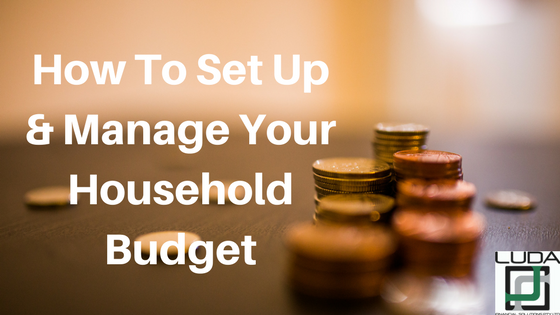
How To Set Up & Manage Your Household Budget
Successful household budgeting is the rock that underpins your family’s financial security. Being in complete control of what you’re earning and spending each month is crucial if you want to achieve long term financial success and stability.
Yet so many people have no idea where to even start when it comes to keeping track of their finances. Often they are afraid to get stuck into their finances as they may be worried that they aren’t doing as well as they would like in meeting their financial goals.
But without facing your budgeting head on, you’ll never know where you can improve and actually start to make headway with both your short term and long term goals.
So if you’ve been avoiding facing your family finances, here are some simple ways you can start to get on top of them. Let’s look at how to set up and manage your household budget.
Input Your Income And Expenditure
To set up your household budget, add up all your monthly income. If you get paid weekly or fortnightly, it might be easier to work out what that equates to on a monthly basis and work from there.
Now add up all your spending – this should include everything from your regular bills, like gas, water, electricity, phone, internet, and any insurances such as health insurance, car insurance, pet insurance and personal insurances. Also include regular expenses like your food shopping, any public transport you use and any extracurricular activities that the kids are enrolled in. Then think of all the bills that come in every 6 months or annually – shire rates and car rego are two big expenses you may only pay annually but need to budget for all year round. Don’t forget about all the ad hoc things you spend your money on too – eating out, going to the cinema, buying gifts for birthdays etc.
For expenses that aren’t always fixed amounts each month go through your bank statements and see what you’ve spent on these sorts of items over the last 3-6 months and use a monthly average of what you’ve spent in the last few months.
Finally, add in any regular savings that you put away each month. Now deduct all your spending and savings from your income. You’ll be left with a total disposable income amount.
Evaluate Your Spending
After you’ve worked out your incomings and outgoings, look at whether your income is covering your spending? Are you sticking to spending what you have? Are you saving any money each month? Or are you spending more than what’s coming in each month?
Let Us Do The Hard Work For You
To make life even easier, you can also track your income and expenditure using automated systems. Using a simple online solution, you can make keeping track of your budget so easy and quick.
It allows you to see month to month very easily where you are spending the majority of your money. It also allows you to identify areas where perhaps you’re spending more than you expected or think you should be.
At LUDA Financial Solutions we can help you set up this automated budget tracking so you can keep track of your spending and make sure that your money is being spent wisely. We can also automate the reconciliation process so you don’t have to worry about working anything out.
To find out more about this fantastic budgeting tool, contact us online now and our financial advisor in Joondalup would love to help you start taking control of your budget.
